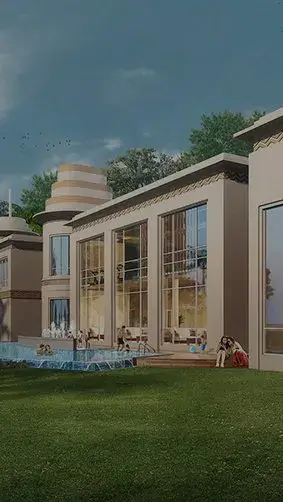Home buying is an essential task that involves tremendous hard work. That’s why you must take some extra precautions before buying any property.
Even though home buying involves huge investments, and consumers often put in all of their lifelong savings while buying a property, the harsh reality is that we still need to cross-check to ensure we’re making the right investment. It’s high time the consumer understood that purchasing a property cannot be equivalent to buying sports shoes online, where you surf the internet, look for the desired shoes, and finalise the deal. Unlike purchasing shoes, you cannot buy a property just by visiting 2-3 websites.
We’ve consolidated a checklist for easy reference of buyers, which will ease your property purchasing experience:-
Essential 13 Key Points for Home Buyers
- Clear Requirement
- Lesser Liability
- Ready to move in or under-construction property
- Maintenance and upkeep
- Staying abreast with new policies
- Home loan options and ROI
- Construction quality
- Flat layout v/s interior v/s carpet area
- View of the flat
- Builder background and history
- Understanding the price
- Evaluate the discount and schemes
- Plan to set off the loans
Read All Key Points in details here:
-
Clear Requirement
Many people have a stereotypical mindset that one should always purchase bigger houses if they are being bought for a living. Besides this translation, every single home buyer should carefully note the area his family will utilise. Crystal’s explicit awareness of space requirements will lead to lesser home loan liability and easier maintenance. For example, a 2 BHK apartment will have a better carpet area over 3 BHK. -
Lesser Liability
Customers must always bear lesser liability. You must know that an under-construction property will have less loan liability than a ready-to-move property. If you pay attention to the nuances, you can easily optimise the payment plan for a valid construction link. The customers must also check the bank’s choice, as many banks might provide better and more affordable EMI plans for the same property. -
Ready to move in or under-construction property
One should always check the pace at which construction has happened for at least the past year. For this, customers can visit the builder’s delivered project and talk to residents and existing clients about the validity of claims of on-time completion and timely move-in. For other insights related to this, you can take advice from property consultants. Also, the price difference is significant here; ready-to-move-in property is usually more expensive than under-construction property. -
Maintenance and upkeep
Maintenance and upkeep are crucial for residential properties, for longevity and for fostering positive vibes. That’s why buying a property that can be easily managed and kept by you and your family members becomes crucial. The common area should be designed to have no fancy- architectural designs are inculcated as they’re difficult or expensive to maintain. -
Staying abreast with new policies
Potential buyers must also stay updated with the government’s current policies and regulation-related framework. This helps them understand whether their desired project is competent and compliant with the latest government laws and ordinances. These norms can be easily implemented by checking the latest government schemes and announcements. You must also verify the builder papers and their legality for trustworthy commitments. -
Home loan options and ROI
Before purchasing any property, you must note the home loan’s rate of interest, checking this for convenient and easy payments. You can check the change in the rate of interest in the previous year and decide accordingly. -
Construction quality
The construction quality is of utmost importance for a property as it testifies to its strength and sustainability period. You must also check the specifications of the property and verify whether the accessories from the brands promised have been installed or not. -
Flat layout v/s interior v/s carpet area
This won’t be an essential factor, but you must also check whether the provided carpet area is sufficient for furniture placement. You can also perform a comparative analysis of the carpet area vs. the build-up area to ensure efficient work is done during construction. Examining that all the columns, pillars, and beams are in the same position as shown in the provisional layout and examining that these specifications follow government compliance. -
View of the flat
You must also take note of the angles of the balconies, the view of each window or balcony, and most importantly, the view from the main gate, seeing whether they are in unison with the flat or not. -
Builder background and history
The builder’s experience and projects significantly affect your project’s prospects. Aspects like existing projects and delivered projects can make the picture very clear about the previous association and credibility of the builder. You can talk to the residents living in their properties to get a better picture of the company’s past projects and the fulfilment of claims. You must also check the builders’ financial stature, which will quickly reveal any shortcomings. For a better picture, you can also check the builder’s virtual reviews, which will help you strengthen the goodwill. -
Understanding the price
Refrain from being fascinated with an attractive payment plan. Also, understand all payment options carefully and compare. Check for the construction-linked plan. It is always advisable to go with it. -
Evaluate the discount and schemes
You must also discuss with the builder the available discounts and compatible schemes on ongoing projects. You must get into the exact details and understand the feasibility of any scheme—offers that are available to you. -
Plan to set off the loans
You must be ready with the home loan plan, details, and execution. Prior planning and discussion with your family members will help you decide upon the loan duration and financial liabilities during that time.
Things to observe during the site visit
Try to make a site visit thrice before closing the deal and keep a set agenda during every site visit. We recommend numerous visits because a more significant number of areas can be observed during repeated site visits. In case of any confusion, you can ask the builder, outside consultant, and existing client and clear your doubts. You must take note of the line and length of plaster, brand of switches and sanitary ware, finishing of flat, carpet area, roof height, window placements, garbage disposal, common lobby ventilation, and many more points for detailing.
Things to take care of at the time of closure
You must carefully read the agreement and payment plan and check the list of documents before signing and sealing the deal. For a well-informed decision, you must follow this checklist and optimistically use your hard-earned money.











